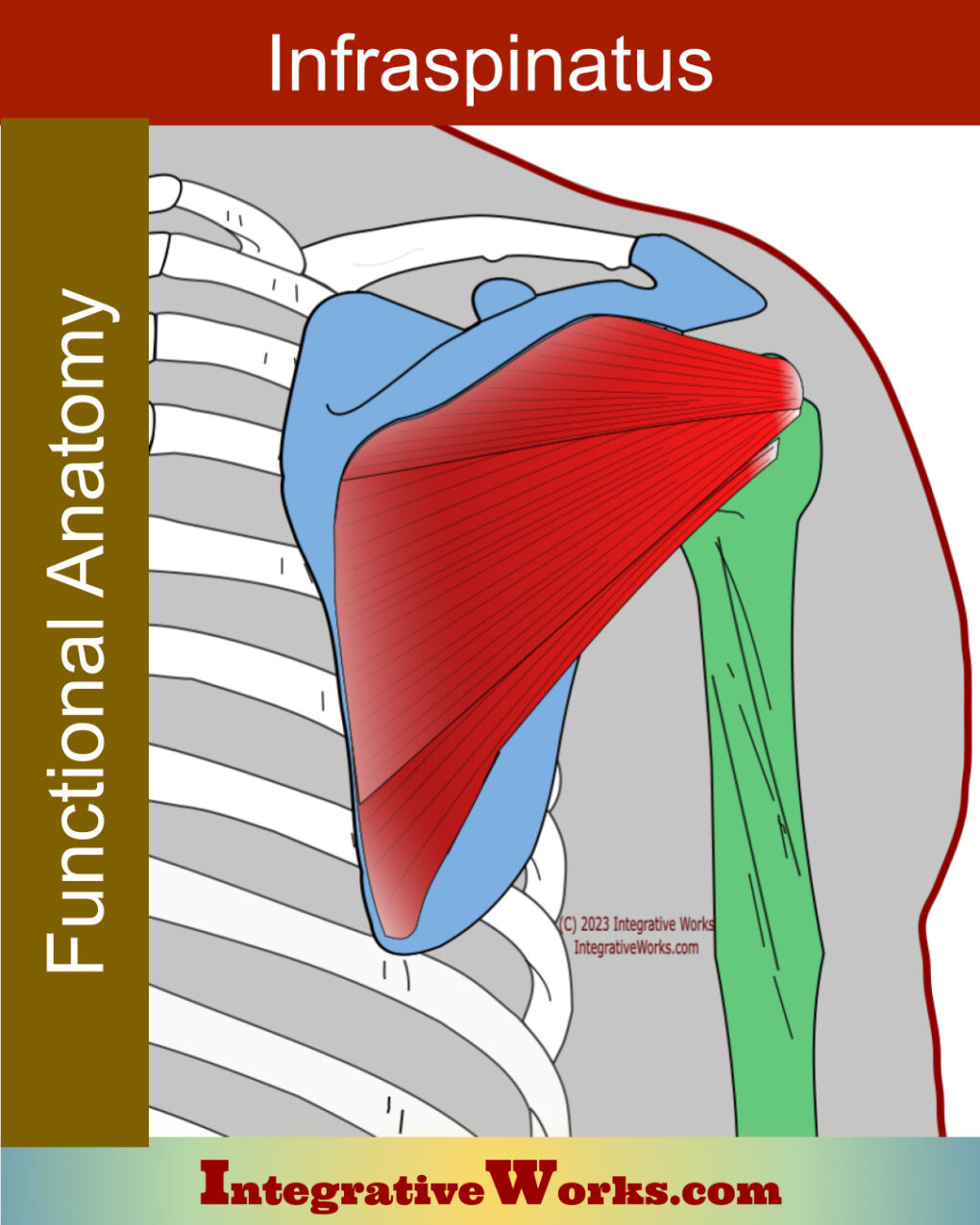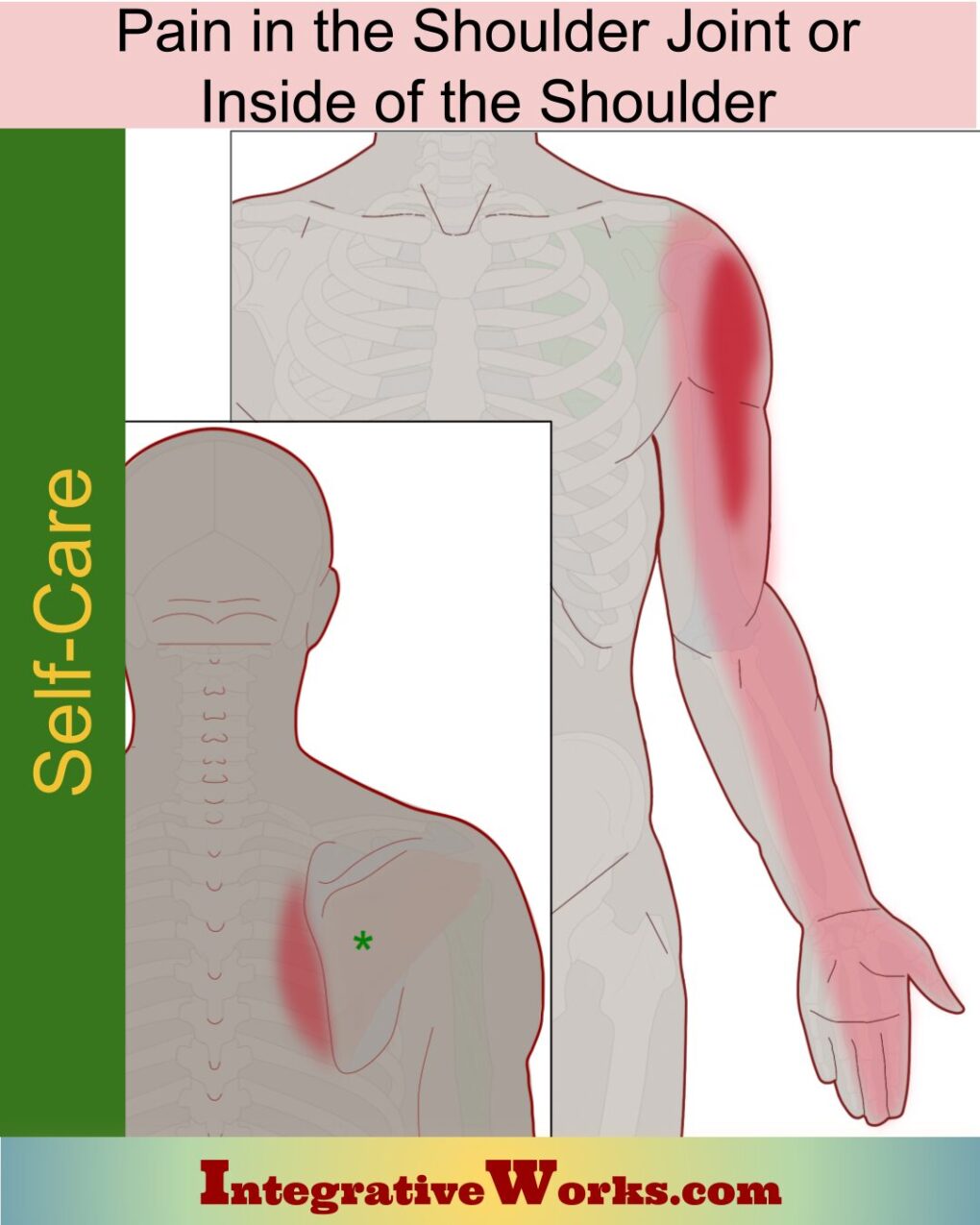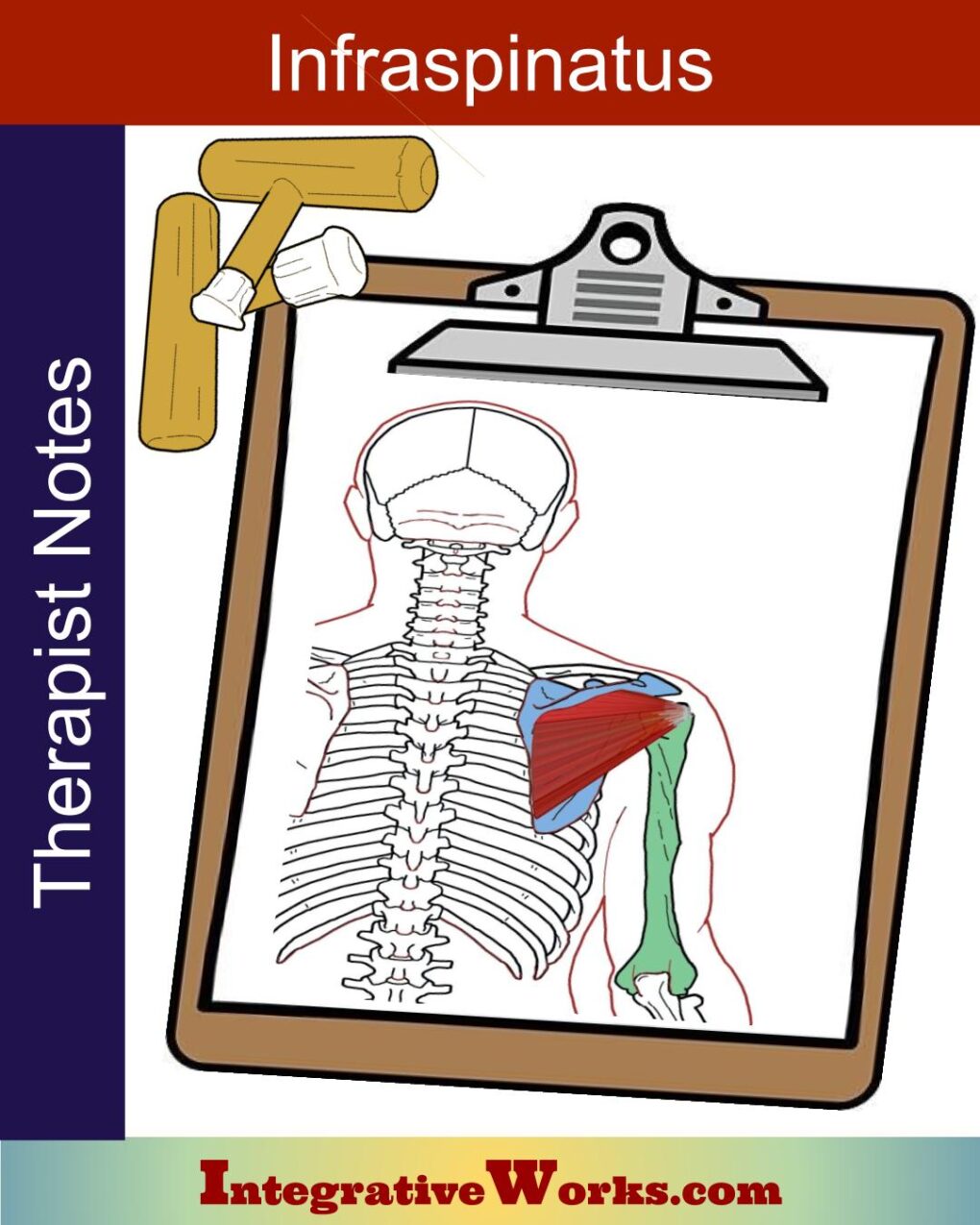Table of Contents
- How People Describe This Pain Pattern
- How You Activate and Intensify This Pain Pattern
- Self-Care – Getting Relief on Your Own
- Musculoskeletal Anatomy Behind Your Pain
- Therapy Notes for Massage and Bodywork
How People Describe This Pain Pattern
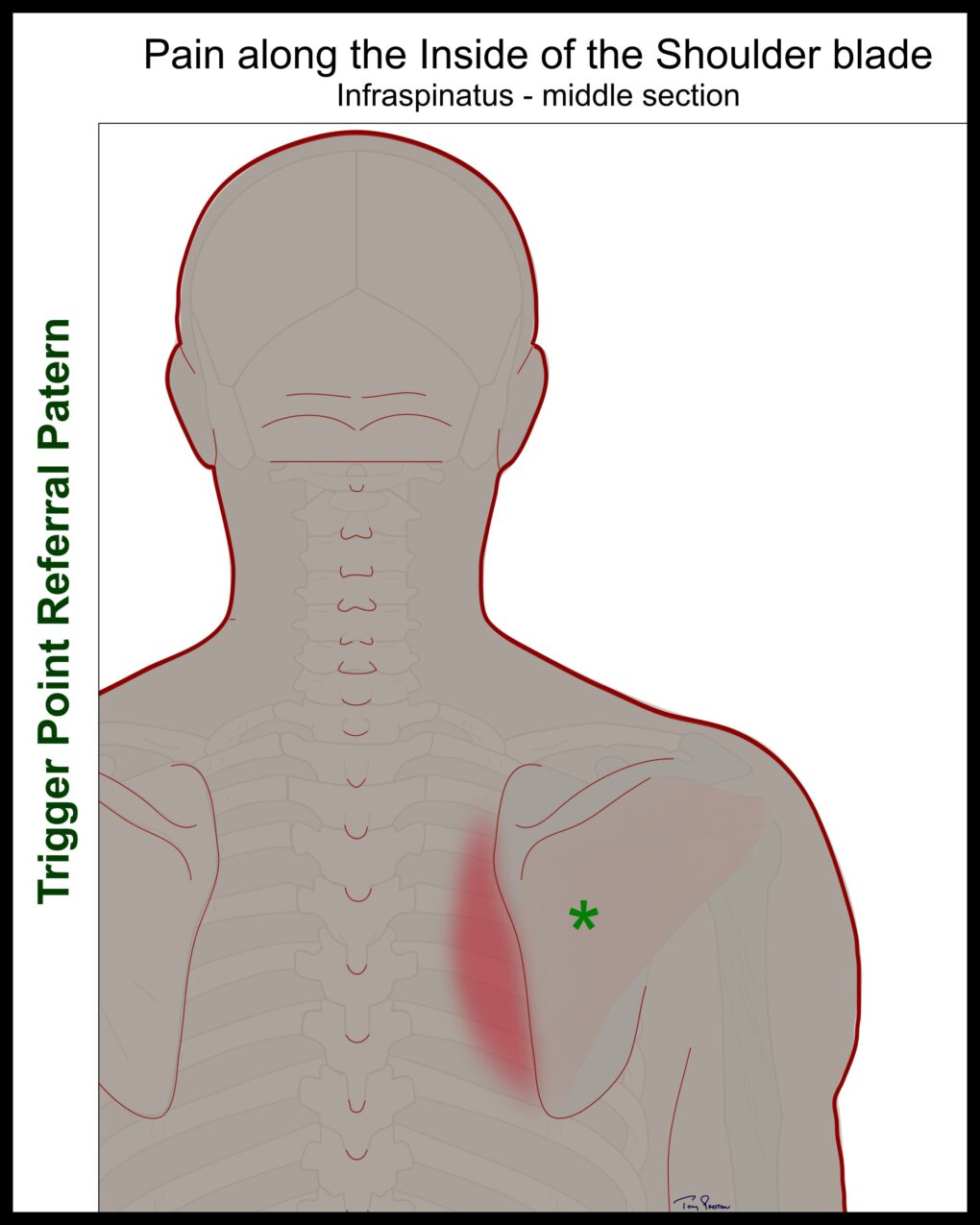
Pain Along Shoulder Blade
People complain of pain along the inside of their shoulder blade when reaching high above the head. They also get pain while reaching to the car’s back seat or adjusting clothing behind the back. Typically, they have adapted their movements to avoid taking that arm too far back. To avoid the pain, they will insert that arm first into a coat. They will avoid tucking in their shirt by putting their pants on over it. They will fasten the bra in front, turn it around, and then carefully insert the painful arm under the strap first.
These same movements involving the infraspinatus muscle may produce shoulder pain, as described in this post. Those shoulder pain patterns commonly bother people more when sleeping on the shoulder than when reaching overhead.
Testing to Assess the Trigger Point
The tests to see if this muscle is the problem involve those movements. The first one involves placing the forearm across the low back. The second one involves reaching around the back of your head to place your palm on your opposite ear. Restriction and pain in either of those activities indicate a problem. A few other muscles, especially the coracobrachialis, may create pain and restriction in these movements. In that case, the pain pattern will be different.
These tests will produce pain and restricted motion when the trigger points in the infraspinatus are active.
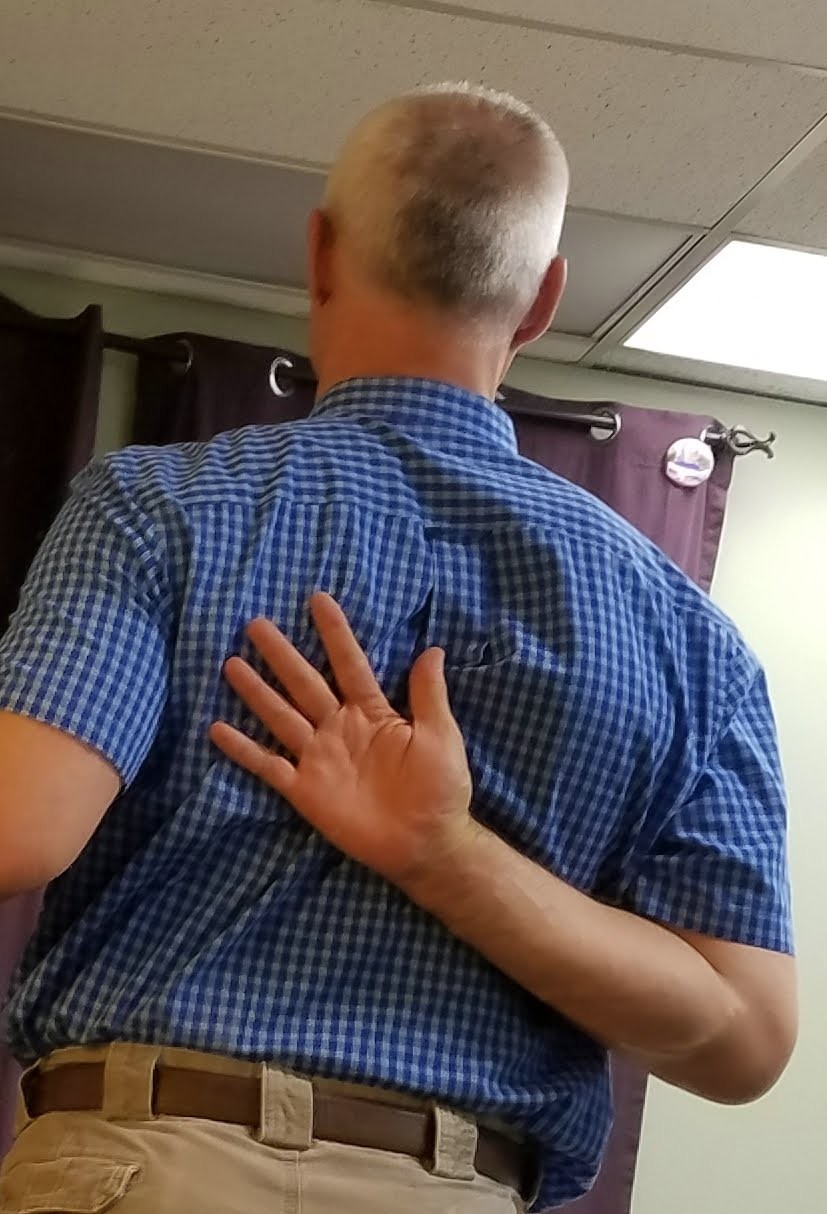
The first test involves placing the forearm across the low back. It usually produces pain in the shoulder. Pain worsens as you reach up the middle of the back. Notably, this may also indicate trigger points in the coracobrachialis with a different pain pattern.
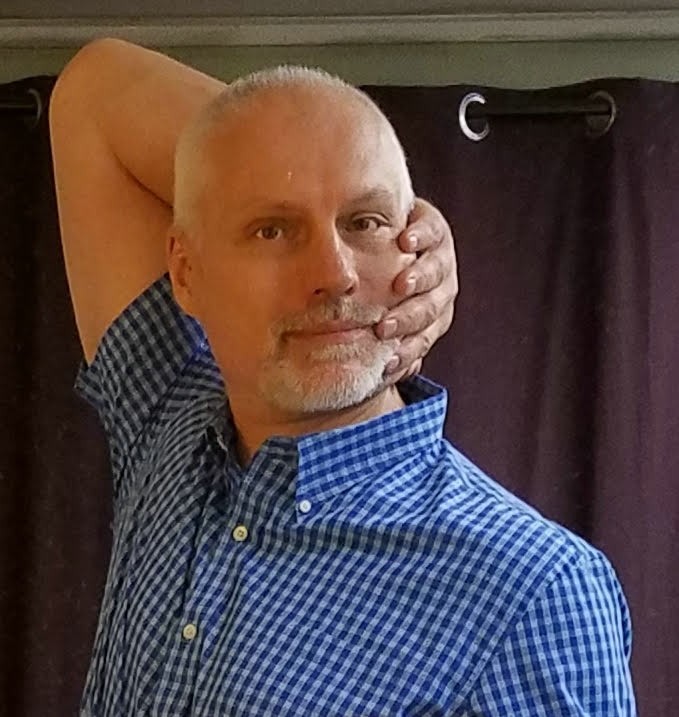
In the second test, reach around the back of your head like the pic. When the trigger points are active, it is restricted and painful. Also, you cannot contact the edge of your mouth without pain and stiffness.
How You Activate and Intensify This Pain Pattern

You can activate this pain pattern in several ways.
Strain
This trigger point usually involves a severe or sudden jerk of the shoulder. A dog that jerks on the leash is a common irritant, especially when it jerks the arm across the body. In other words, it would be more likely if the dog in this photo ran toward the grass, twisting her shoulder across her chest. People may also overstretch this muscle when they fall forward, landing with the arm in front of them.
Falling back while holding onto a bar also strains this muscle. Again, when the arm crosses the body, it is more likely to activate this trigger point.
Sleeping position
Another common cause is that you sleep on that shoulder at night. Although, that is usually associated with this pattern in the shoulder joint.

Blunt Trauma
A blow to the back of the shoulder can strain the joint, overstretch the tendon and activate this trigger point as well. Research says this might happen when someone is caught off guard while standing on a moving bus or train. One case fell and landed on his shoulder.
Once its activated, activities that reach behind the body intensify the condition. Many clients have complained about reaching to the back seat to deal with a child or get a bag out of the floorboard. Additionally, reaching out to the end table by the bed, fastening a bra, or tucking in a shirt are common irritants.
The Musculoskeletal Anatomy Behind Your Pain
Musculoskeletal Anatomy
This post on anatomy contains standard information about the origin, insertion, function, and innervation of muscles. Additionally, it includes information on functional considerations and anomalies.
Find Related Posts
Anatomy posts have a grid of all related posts. This includes posts on pain patterns, self-care, therapy notes, NMT protocols, cranial techniques, and cases.
Getting Relief on Your Own
Clinically Proven
Self-Care Strategies
Self-Care Posts have common sections to make them easy to follow and understand:
- Activities to Avoid or Change
- Strategies for Quick Relief
- Stretches and Exercise for Longer-Lasting Relief
- Yoga Corner
Therapy Notes for Massage and Bodywork
Better Bodywork
Through Shared Expertise
Therapy Notes provide details for cranial, spinal, and local joint work. These notes also link to a traditional neuromuscular protocol.
By treating integrative components first, direct work on the muscle becomes less intense while providing longer-lasting relief.
Support Integrative Works to
stay independent
and produce great content.
You can subscribe to our community on Patreon. You will get links to free content and access to exclusive content not seen on this site. In addition, we will be posting anatomy illustrations, treatment notes, and sections from our manuals not found on this site. Thank you so much for being so supportive.
Cranio Cradle Cup
This mug has classic, colorful illustrations of the craniosacral system and vault hold #3. It makes a great gift and conversation piece.
Tony Preston has a practice in Atlanta, Georgia, where he sees clients. He has written materials and instructed classes since the mid-90s. This includes anatomy, trigger points, cranial, and neuromuscular.
Question? Comment? Typo?
integrativeworks@gmail.com
Interested in a session with Tony?
Call 404-226-1363
Follow us on Instagram

*This site is undergoing significant changes. We are reformatting and expanding the posts to make them easier to read. The result will also be more accessible and include more patterns with better self-care. Meanwhile, there may be formatting, content presentation, and readability inconsistencies. Until we get older posts updated, please excuse our mess.

